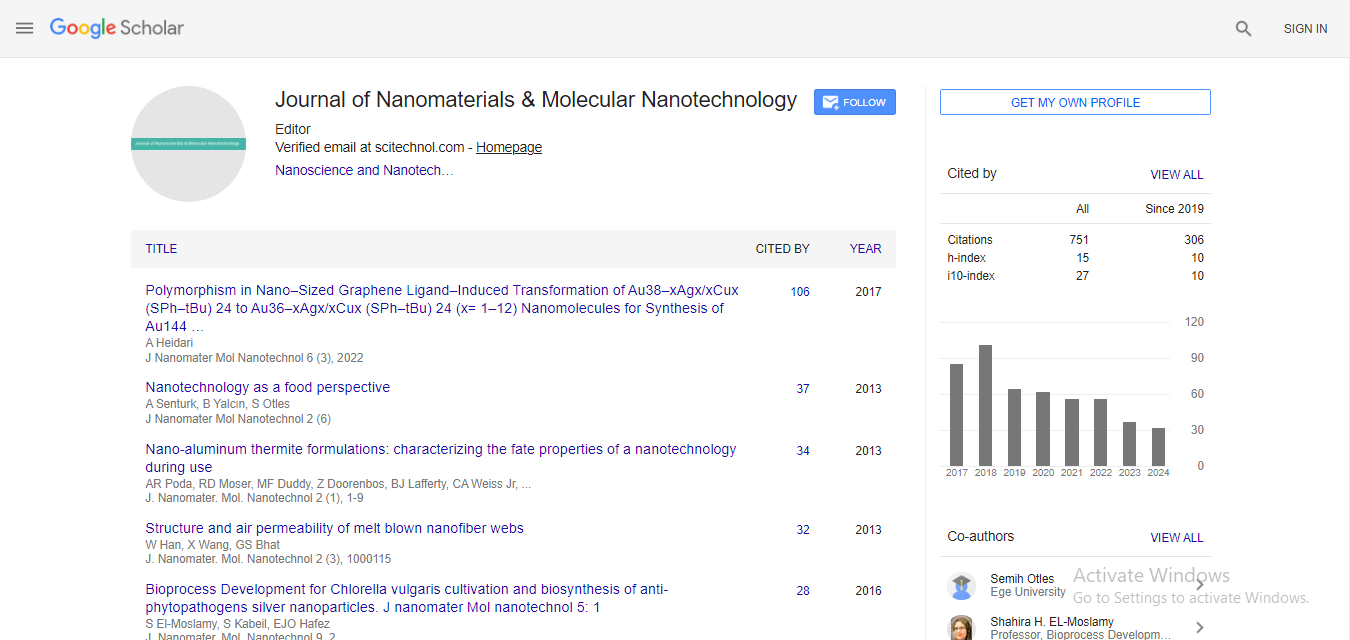Three-dimensional artificial scaffold for biomedical applications using nanofibers
Sofia El-Ghazali, Shunichi Kobayashi and Ick Soo Kim
Shinshu University, Japan
: J Nanomater Mol Nanotechnol
Abstract
Electrospinning technique is being widely used recently thanks to its potential applications and bulk productivity. High surface area, lightweight and ease of three dimensional manufacturing structures are the most attractive features for the biomedical field and applications such as skin regeneration, controlled drug release and artificial scaffolds In particular, artificial blood vessels aim to replace an injured area of a given blood vessels for a temporary period, and this can be reached using nanofibers as they are structurally able to mimic the behavior of the extracellular matrix. The composition of co-electro spun nanofibers blend is a new technique that helps in achieving different properties from different polymers such as strength, biocompatibility and rate of biodegradation. We tried co-electrospinning of Cellulose acetate, Poly L-lactic Acid and Polycaprolactone and we effectively succeeded to obtain good results for coelectro spun PLLA, PCL and CA nanofibers in the shape of artificial blood vessels having a smooth morphology and an average flow rate of 25ml/minute.
Biography
Sofia El-Ghazali is a second-year masters student at Shinshu University, Japan; after completing a bachelor of Mathematics and Physics at Ibn Abdoun Center of preparatory classes in Khouribga, Morocco and a Master in International Logistics at ESITH university, Morocco.
E-mail: guvenc@kockaya.net
 Spanish
Spanish  Chinese
Chinese  Russian
Russian  German
German  French
French  Japanese
Japanese  Portuguese
Portuguese  Hindi
Hindi 



